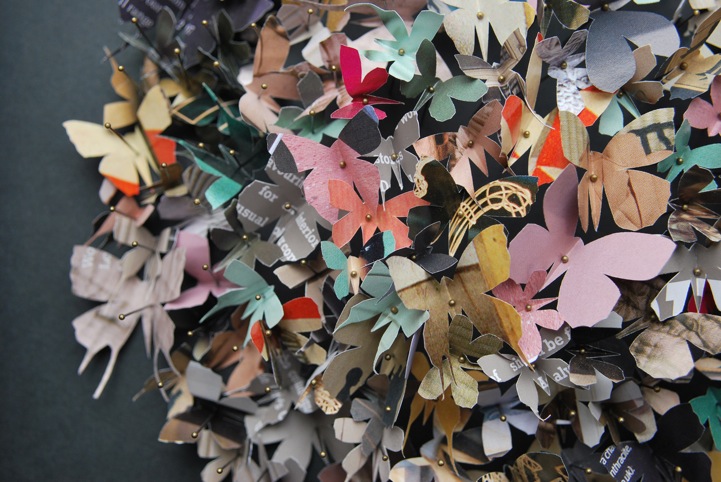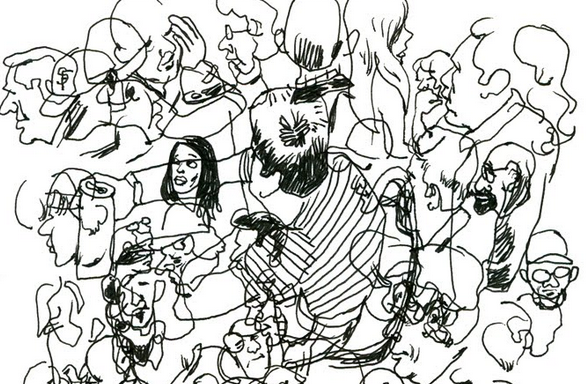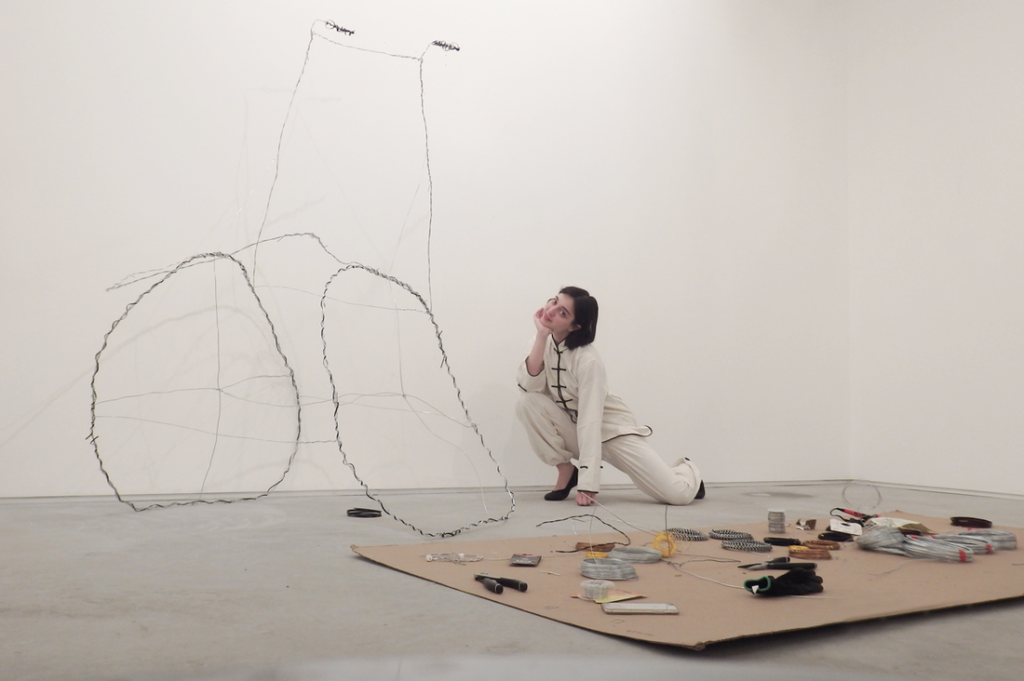
Argentinean artist Amalia Ulman is known for work that juxtaposes the banal, commercial and commoditized ideals of female beauty with danger, violence and desolation. Since graduating from Central Saint Martins in London in 2011, Ulman has worked in mediums ranging from poetry, graphic design, video, iOS mobile uploads, and installation.
In her most recent show, a solo exhibition called “Stock Images of War” that ran at James Fuentes from January 11 to February 8, 2015, harshly lit wire sculptures were contrasted with incongruous sensory stimuli. Rage Against the Machine and the Bloodhound Gang played in the background, and the scent of baked-apple-strudel emanated from air fresheners hanging in the gallery. The skeletal sculptures were rendered to resemble both civilian and military vehicles including tricycles, wheelchairs, tanks, and cars. The title of the show primed the viewer to expect images of bloodshed, but what visitors experienced was an auditory and sensory onslaught coupled with the vague and precarious outlines of stable objects. The scene brought to mind Guantanimo Bay, where prisoners were forced to listen to popular songs on repeat in dark and stark rooms.

Ulman explored a similar theme in her show “Destruction of Experience” which was displayed at London’s Evelyn Yard in October 2014. In this immersive installation, Ulman created the set of a futuristic office space in the year 2057. The word “Nirvana” was displayed at the helm of the gallery in block text and was flanked by a corporate looking logo. Unforgiving overhead lighting shone on clumps of metal chairs that faced stock posters, and air fresheners emitted the scent of “fresh linen.” The posters were motivation or instructional, as calendars decorated with clip art style images promoted concepts such as “community exchange.” At first glance, these posters seem like something you’d find in a doctors office, but upon closer inspection they are clearly unfinished.

In her show “Moist Forever,” which aired at the future gallery in Berlin in 2013, Ulman also used items conventionally reserved for the consumer and commercial sphere. Displays and sculptures were made from materials such as glitter, nail stickers, pleather, lip-gloss, coffee cups, candles, and engraved photo key chains. In these shows, Ulman critiques the concept of wellness and beauty as a consumer good, rendering it impersonal and hollow.
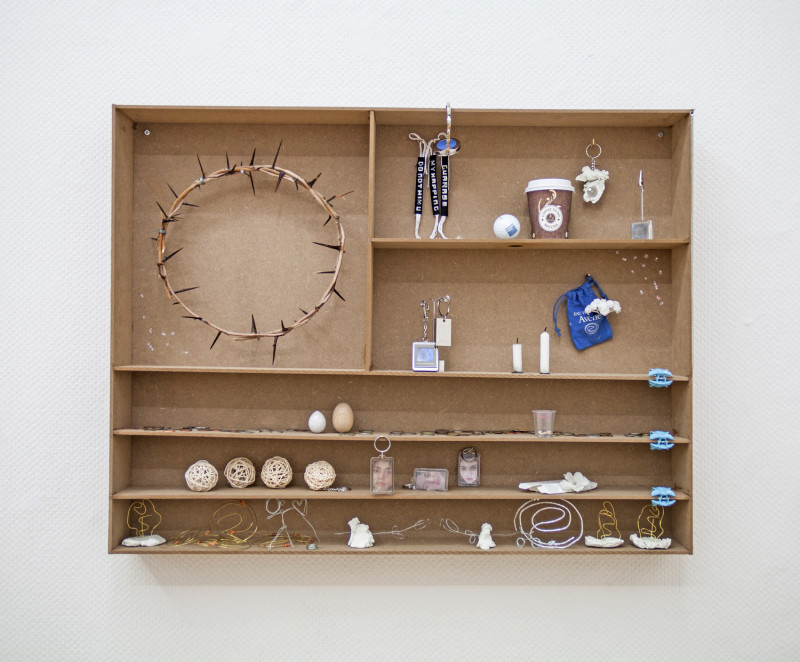
In response to the interview question “how did you get interested in art?” Ulman responded, “first was the selfie, then the art.” In 2014 Ulman set out on a performance art project called “Excellences and Perfections” to replicate the profile of an Instagram microcelebrity.
In April, she studied profiles of popular “hot girl” Instagram accounts and immersed herself in their language, hashtags, and overall style. Between the months of May and August, Ulman set her project in motion, posting mirror seflies, twerking videos, and starbucks beverages with captions filled with #cutegasm #foodporn #gratitude #fittness. In what Ulman described as a “trolling experience,” she amassed close to 65,000 followers. The cliché and “basic” aesthetic quickly descended into darker content, however, such as pixilated clips of Ulman crying and selfies with post plastic surgery bandages. What is unsettling about this piece is how easily instagram users assumed it was real. Ulman reduces fame to a formula, exposing the packaged nature of what is considered beautiful.


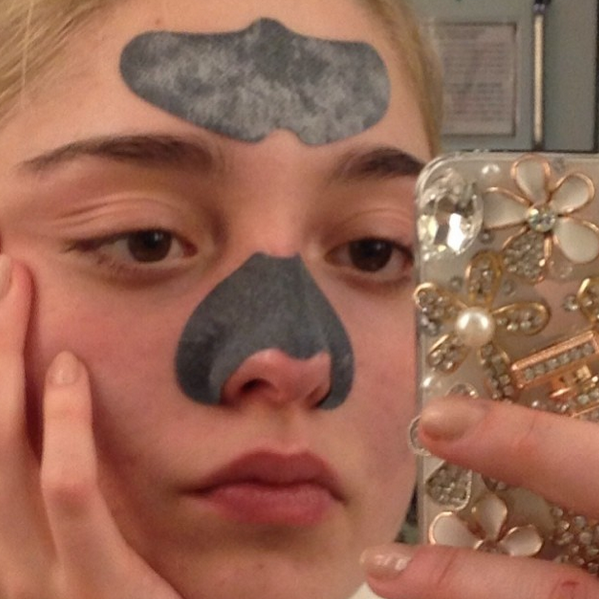
In an Art in America review of “Stock Images of War,” Dan Allegretto describes a trend that is present throughout Ulman’s work, stating that her “sculptures are airy and light but almost feel treacherous, as they look like they’re on the verge of collapse.” Indeed, Ulman creates environments that use innocent and commonly identifiable elements to create scenarios that are eerie and off-putting.
Sources: Art in American Magazine, The Fader,




